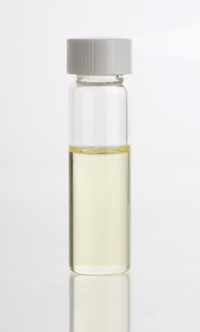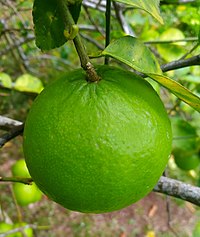
Improving the storage quality of Tahitian limes (Citrus latifolia) by pre-storage UV-C irradiation
Sign Up to like & getrecommendations! Published in 2019 at "Journal of Food Science and Technology"
DOI: 10.1007/s13197-019-03623-x
Abstract: UV-C (180–280 nm) has been shown to extend the postharvest shelf-life of many horticulture crops. In this study, Tahitian limes (Citrus latifolia) were exposed to 0, 3.4, 7.2 and 10.5 kJ m−2 UV-C then stored for 28 days in air… read more here.
Keywords: storage; acceptability; limes citrus; citrus latifolia ... See more keywords

Antimicrobial soy protein based coatings: Application to Persian lime (Citrus latifolia Tanaka) for protection and preservation
Sign Up to like & getrecommendations! Published in 2017 at "Postharvest Biology and Technology"
DOI: 10.1016/j.postharvbio.2017.06.005
Abstract: Preventive antifungal activity of postharvest treatments with SPI (soy protein isolate) −coatings forming solutions against blue mould decay were evaluated on Persian lime (Citrus latifolia Tanaka) artificially inoculated in rind wounds with Penicillium italicum. Stimulatory… read more here.
Keywords: latifolia tanaka; persian lime; citrus latifolia; soy protein ... See more keywords

Effect of different rootstocks on Persian lime (Citrus latifolia T.) postharvest quality
Sign Up to like & getrecommendations! Published in 2019 at "Scientia Horticulturae"
DOI: 10.1016/j.scienta.2019.108716
Abstract: Abstract Mexico is the world’s leading Persian lime (Citrus latifolia T.) fruit producer and exporter. The use of rootstocks in citrus may increase fruit quality; however, the most used rootstock in Mexico is Sour orange,… read more here.
Keywords: persian lime; citrus latifolia; quality; citrus ... See more keywords

Metabolomic Investigation of Citrus latifolia and the Putative Role of Coumarins in Resistance to Black Spot Disease
Sign Up to like & getrecommendations! Published in 2022 at "Frontiers in Molecular Biosciences"
DOI: 10.3389/fmolb.2022.934401
Abstract: Citrus black spot (CBS) is a disease caused by the fungus Phyllosticta citricarpa that affects citrus plants, causing fruit blemish and premature drop that result in severe economic losses in commercial citrus orchards. However, CBS… read more here.
Keywords: disease; citrus latifolia; metabolomic investigation; citrus ... See more keywords